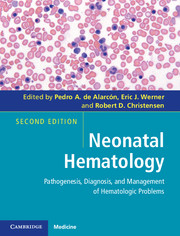Book contents
- Frontmatter
- Contents
- Contributors
- Foreword
- Preface
- 1 A historical review
- Section I Developmental hematology
- Section II Erythrocyte disorders
- Section III Platelet disorders
- Section IV Leukocyte disorders
- Section V Immunologic disorders
- Section VI Hemostatic disorders
- Section VII Transfusional medicine
- Section VIII Miscellaneous
- Index
- Plate section
- References
1 - A historical review
Published online by Cambridge University Press: 05 February 2013
- Frontmatter
- Contents
- Contributors
- Foreword
- Preface
- 1 A historical review
- Section I Developmental hematology
- Section II Erythrocyte disorders
- Section III Platelet disorders
- Section IV Leukocyte disorders
- Section V Immunologic disorders
- Section VI Hemostatic disorders
- Section VII Transfusional medicine
- Section VIII Miscellaneous
- Index
- Plate section
- References
Summary
Ancient concepts of the blood were described by Hippocrates and Galen 2000 years ago in their doctrine of “humors.” It was believed that the body was made up of four humors – blood, phlegm, black bile, and yellow bile – and that these four components had the qualities of heat (Hot-blooded!), cold, moist, and dry. The Galenic concept of the blood prevailed through the Middle Ages. Health or disease were a result of an imbalance, between these humors. This was the basis of the practice of therapeutic blood-letting (which, fortunately, was performed infrequently on children) through the mid nineteenth century as a way to rid the body of the imbalance of humors believed to cause a wide variety of diseases.
The hematology of the fetus and newborn is a relatively recent area of study whose development depended upon the evolution of the science of hematology and, especially, upon methods to study the blood and its elements. As Wintrobe has pointed out, the development of the field of hematology has been driven by technology. He divided the evolution of hematology into two general areas: morphology, which relied on the development of microscopy, and quantitation of the elements of the blood, which came later (1).
- Type
- Chapter
- Information
- Neonatal HematologyPathogenesis, Diagnosis, and Management of Hematologic Problems, pp. 1 - 10Publisher: Cambridge University PressPrint publication year: 2013



